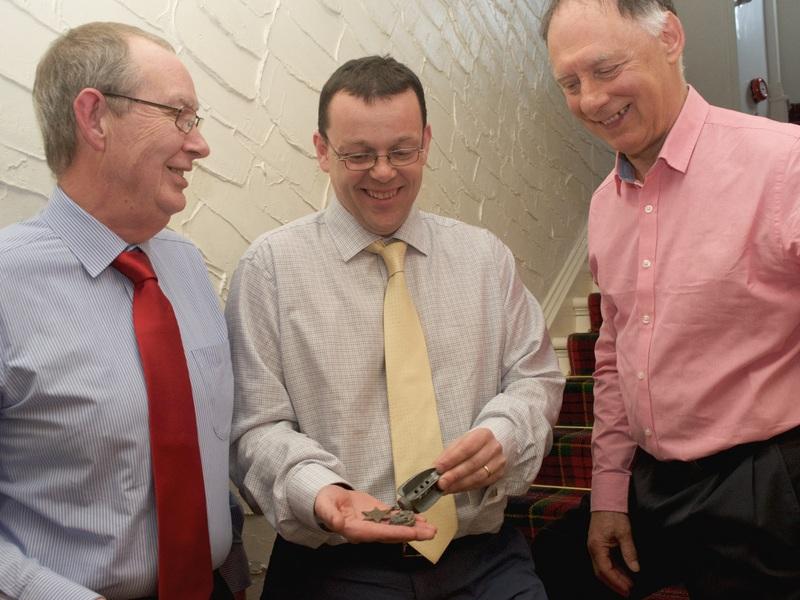The History of Dunblane's Vikings - Murray Cook
Thu, Apr 28th 2016 at 6:00 pm - 8:30 pm
The History of Dunblane's Vikings

DUNBLANE – CAPITAL OF THE ROMAN EMPIRE
It’s more than a little strange that for a short time Dunblane was the capital of the Roman Empire. How can this be? Well perhaps that needs a little explanation. Wherever the Roman Emperor was at any point in time was designated as the capital of the Roman Empire. The vital time for Dunblane (even if it wasn’t named Dunblane at the time) was during the invasion of Scotland in the second century AD led by the Roman Emperor Septimus Severus. It is firmly believed he and his troops camped briefly in the area now appropriately named Roman Camp. So for that short time Dunblane was the capital of the Roman Empire.
Dr Murray Cook, Archaeologist with Stirling Council, shared this, and other fascinating facts about the early history of Dunblane, with members of the Bridge of Allan and Dunblane Rotary Club at its meeting on Thursday 28th April.
The early incursions by the Romans, probably initially under General Agricola in the first century AD, has resulted in a number of significant archaeological features in the area. Clearly the Antonine Wall is the most important, but the remains of Gask Fort – a series of watchtowers along the Gask Ridge stretching from Doune to the Tay – can still be seen, most notably near Greenloaning.
Reflecting on the name of Dunblane, Dr Cook suggested two possibilities: either it derived from Dun Blane – the fort of [Saint]Blane – or from Dol Blane – the plain of Blane. Whichever is the case, there is strong evidence of an early Christian monastic settlement on Holme Hill, probably as early as the seventh century, having a link to Saint Blane.
Dunblane, lying close to Stirling and, therefore, on a vital route to the north, was involved in the comings and goings of the following centuries. In the ninth century the village was sacked and burnt twice: by the Picts in 849 AD, and then by the Vikings in or about 900 AD. In 878 AD King Aed, the son of Kenneth McAlpine, was betrayed and killed at Dunblane. Despite the perception of the Vikings as merciless invaders, there is evidence, by way of a Viking burial mound at Logie Kirk, that the Vikings, in control of the area for some 20 to 30 years, had become at least partially integrated into the community.
From this period, Dr Cook showed a picture of a small piece of “hacksilver” – silver which had been broken up and then shared among the troops. Dr Cook hinted that it was possible that a significant Viking find might be made close to Dunblane. Evidence increasingly pointed to its existence, and this is being investigated.
Having illuminated the early history of Dunblane, Dr Cook spoke about some historical items he had brought with him, each having a connection to the Dunblane area. These included a musket ball and a cannon ball fired at the battle of Sherrifmuir in 1715. From the same area, he had a hand grenade and a mortar shell used at the Atlantic Wall in the training of troops for the D-Day invasion. In connection with this, he had a medal awarded to those who took part in the D-Day landing.
Peter Farr, Speaker’s Host, thanked Dr Cook for a most interesting examination of the early history of Dunblane, and members joined with him in expressing their appreciation.
The meeting of the Rotary Club on Thursday 26th May will be held at the Westlands Hotel, Doune Road, at 6.00 for 6-30pm. The speaker will be Ranald Shepherd who will talk about the Battle of Jutland, the 100th anniversary of which will be on 31st May. Visitors to the Club are always very welcome. Anyone interested in attending should contact the Club Secretary, Iain Fraser at secretary@dunblanerotary.org. Tel: 01786 822751. More information can be found on the Club website: www.dunblanerotary.org.uk or on Facebook: www.facebook.com/dunblanerotary



